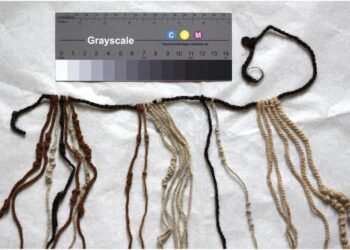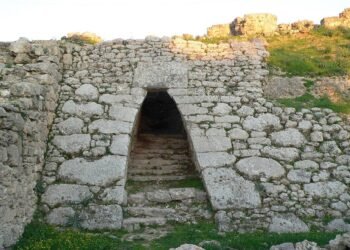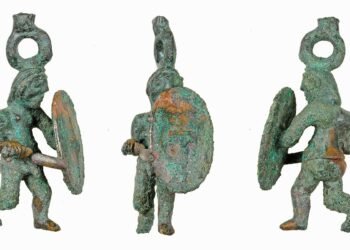Archaeologists have unearthed five Bronze Age axes in the Starogard Forest District of Kociewie, Poland, according to an announcement by the Pomeranian Provincial Conservator of Monuments.
Discovered by history enthusiast Denis Konkol, the axes, dating back 3,700 to 3,100 years (1700-1100 BCE), were found buried just below the surface in a shallow pit.
Denis Konkol, having obtained the necessary permits, reported his discovery to local authorities, in accordance with Poland’s regulations on artifact searches. Archaeologists, led by Igor Strzok, the Pomeranian Provincial Conservator of Monuments, conducted a meticulous excavation, preventing any potential damage to the site.
The axes, categorized as the tautušiai type associated with Baltic cultures, originate from contemporary Lithuania or northeastern Poland. Characterized by their substantial size, these Bronze Age artifacts feature a slender handle with elevated edges and a broad blade.
Piotr Klimaszewski, head of the Archaeological Monuments Department, suggests these axes were likely part of a ritual deposit or offering, possibly linked to trade or the religious practices of Bronze Age communities.
Such finds are exceedingly rare in the region, with the last comparable discovery occurring approximately 20 years ago in the Lublin area. Traditionally, Bronze Age deposits in this area yielded predominantly bracelets or breastplates.
The discovery site, located in the Kociewie region, comprises forests and farmland in northern Poland. The axes were found buried together about 20-30 centimeters below ground level under a layer of grass and soil.
Due to the scarcity of similar discoveries in the region, experts are calling this an “archaeological sensation.” Igor Strzok emphasizes the importance of Konkol’s timely reporting, which enabled archaeologists to thoroughly investigate and protect this valuable glimpse into Poland’s ancient past.
The five Bronze Age axes are scheduled to undergo further examination and preservation at the Archaeological Museum in Gdańsk.






















